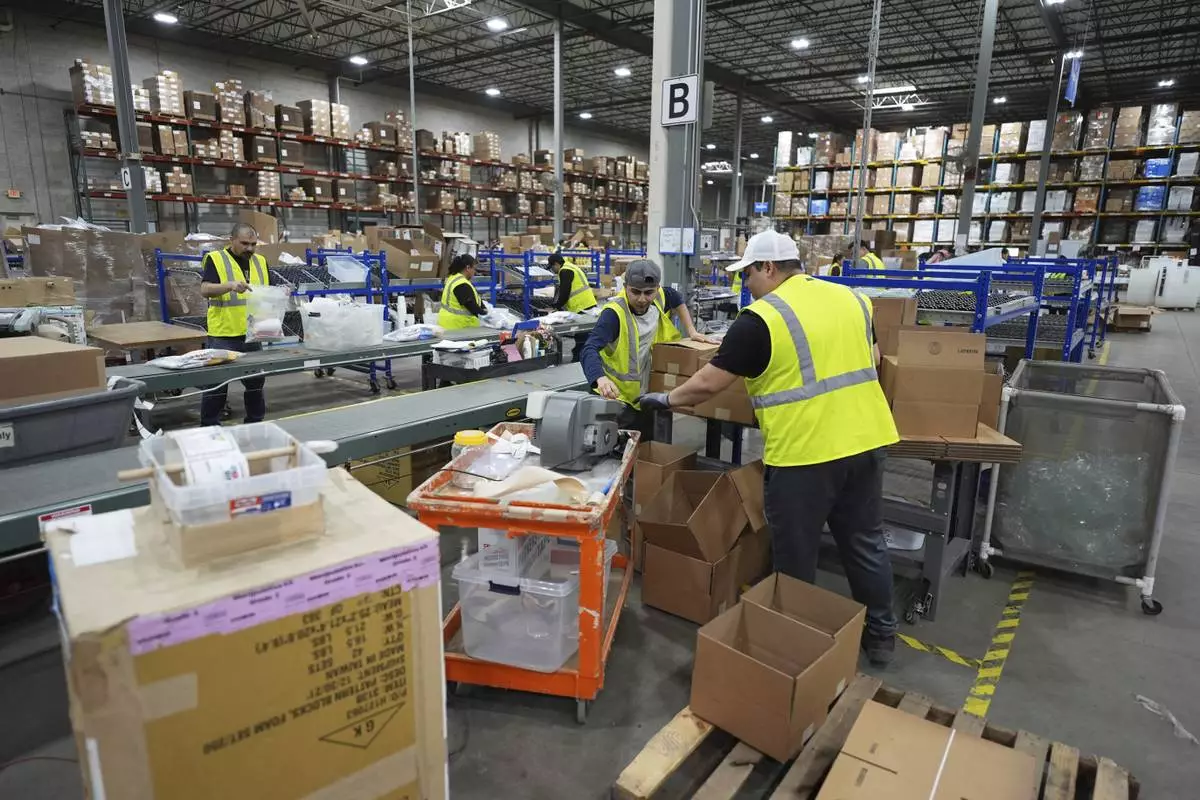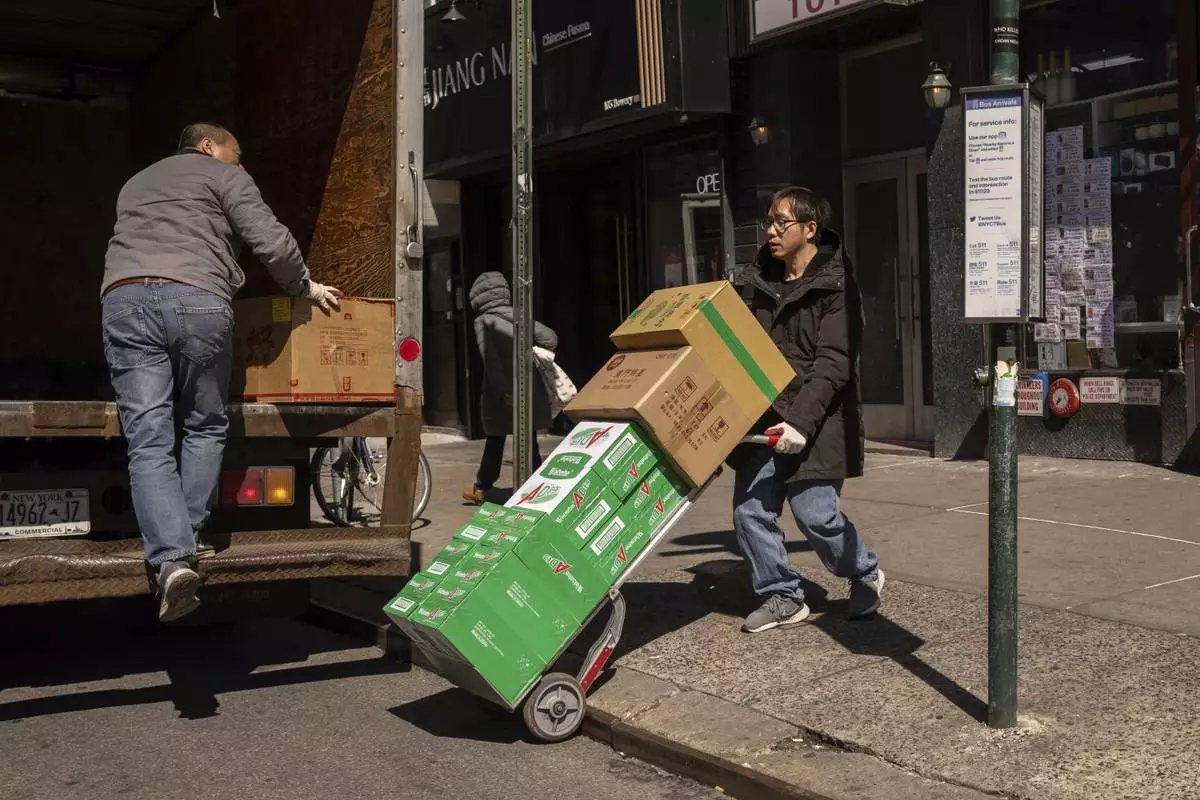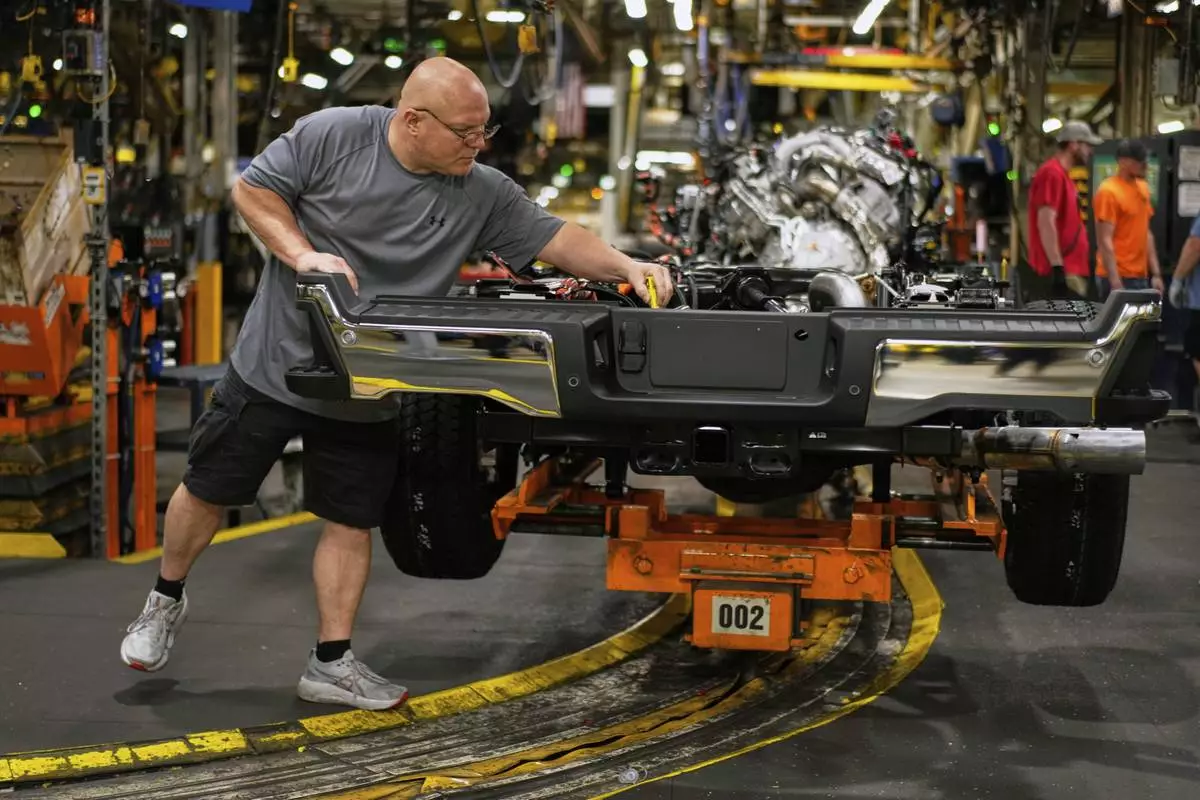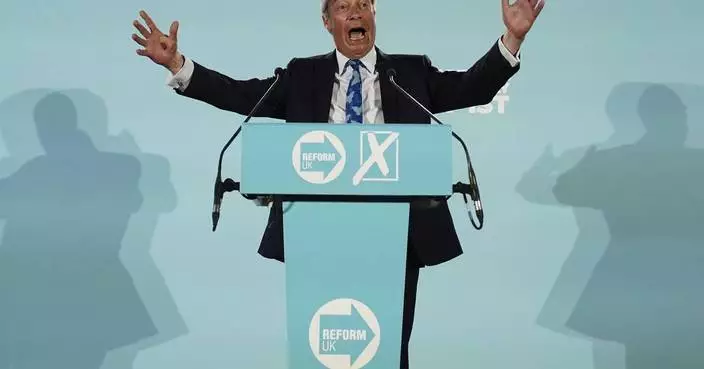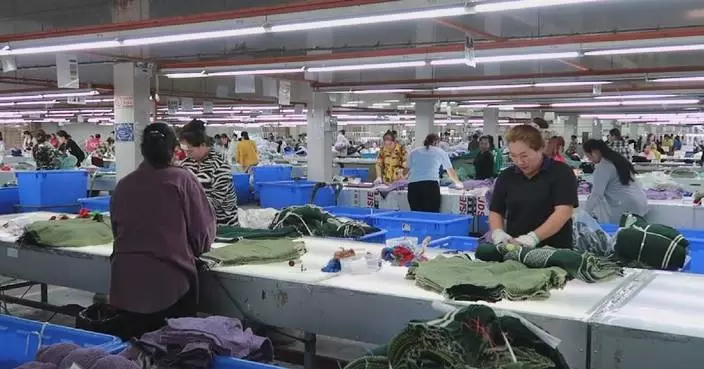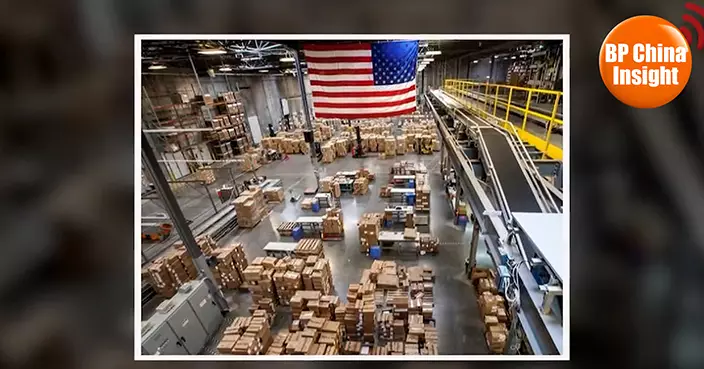WASHINGTON (AP) — U.S. consumer sentiment plunged in April, the fourth consecutive month of declines, in a seemingly sharp rebuke of President Donald Trump's trade wars that have fueled anxiety over possible job losses and rising inflation.
The preliminary reading of the University of Michigan’s closely watched consumer sentiment index, released Friday, fell 11% on a monthly basis to 50.8, the lowest since the depths of the COVID-19 pandemic. Over the past year, sentiment has tumbled 34%.
The decline was “pervasive and unanimous across age, income, education, geographic region, and political affiliation,” said Joanne Hsu, director of the survey.
The share of respondents expecting unemployment to rise in the coming months increased for the fifth straight month and is now the highest since 2009 during the Great Recession.
While consumer sentiment is not always a reliable indicator of the overall economy, it has at times reflected shifting vibes in how the public feels about presidential leadership. Sentiment among Republicans has dropped 6% over the past month as Trump teased, then rolled out a series of aggressive tariffs, only to institute a 90-day pause of some import taxes Wednesday.
“Interestingly, President Trump appears to be getting much of the blame for much of the deterioration in sentiment with 67% of respondents saying the government is doing a ‘poor job’ on fighting inflation and unemployment,” said James Knightley, chief international economist at ING. “Only 18% say it is doing a ‘good job.’”
Asked at Friday's news briefing about the falling consumer sentiment, White House press secretary Karoline Leavitt said that the public should trust in Trump as he executes his tariffs plan.
“As he said, this is going to be a period of transition,” she said. “He wants consumers to trust in him, and they should trust in him.”
The result of the trade war drama so far is a baseline tariff on most countries of 10%, with imports from China getting taxed at a combined 145%. Goods from Canada and Mexico face tariffs of up to 25%, while imported autos, steel and aluminum are taxed at that same rate. China retaliated Wednesday with a 125% tariff on U.S. goods.
The Trump administration has suggested that it cut new trade agreements with more than 75 nations over a span of 90 days.
“We are doing really well on our TARIFF POLICY,” Trump said Friday on his social media site Truth Social. “Very exciting for America, and the World!!! It is moving along quickly.”
Eroding American confidence has also surfaced in the financial markets. Investors are selling off U.S. debt. The interest rate on the 10-year U.S. Treasury note was at 4.48% on Friday afternoon, up from roughly 4% at the start of the week. That suggests more economic instability ahead.
On Friday, the dollar slumped to a three-year low against the euro.
Larry Fink, CEO of the investment firm BlackRock, told CNBC that the U.S. economy is on the cusp of a downturn, if not already there.
“I think we’re very close, if not in, a recession now,” Fink said.
The Michigan sentiment survey found that people now expect long-term inflation to reach 4.4%, up from 4.1% last month, a move that may be of particular concern for the U.S. Federal Reserve. The Fed pays close attention to inflation expectations, because they can become self-fulfilling. If people expect prices to rise, they often take steps that can push up prices, such as accelerating purchases or seeking higher wages.
It's a sign that most of the public views as a blip data this week showing that consumer inflation declined in March to an annual rate of 2.4%. Most economists believe that, given the intensifying trade wars, inflation is likely to be reignited.
Americans’ inflation expectations over the next five years are now at the highest since 1991, according to Capital Economics, a forecasting firm.
“Households appear to have come to the same conclusion as markets: the tariffs will do lasting damage to the US economy,” Harry Chambers, assistant economist at Capital Economics, said in an email.
Consumer sentiment remains sharply divided by party, with the index for Democrats at 34.1 and Republicans at 81.9. Yet both recorded steep drops in April.
Sentiment among independents plunged to 46.8 from 55.7, and is sharply below its post-election peak of 70.2. The April reading among independents is now lower than it was at any point during Joe Biden's presidency.
Those inflation expectations have now jumped for several months. At a news conference last month, Fed Chair Jerome Powell said the University of Michigan's inflation expectations measure was an “outlier.” Market-based measures of inflation expectations, based on inflation-adjusted Treasury securities, have remained low, near the Fed's 2% target.
Typically, falling sentiment suggests that Americans will cut back on spending, though in recent years consumers have at times kept spending despite the gloom. Yet the fact that worries about employment are rising could lead to more caution by consumers.
“This lack of labor market confidence lies in sharp contrast to the past several years, when robust spending was supported primarily by strong labor markets and incomes,” Hsu said.
What makes this particular moment unique is that the back-and-forth over tariffs has created a degree of paralysis with hiring freezes and uncertainty.
“For everybody watching this process unfold, it’s causing a lot of anxiety because they don’t know how to make the right decisions when things change hourly,” said David French, senior vice president of government relations at the National Retail Federation.
__
AP reporter Paul Wiseman contributed to this report.
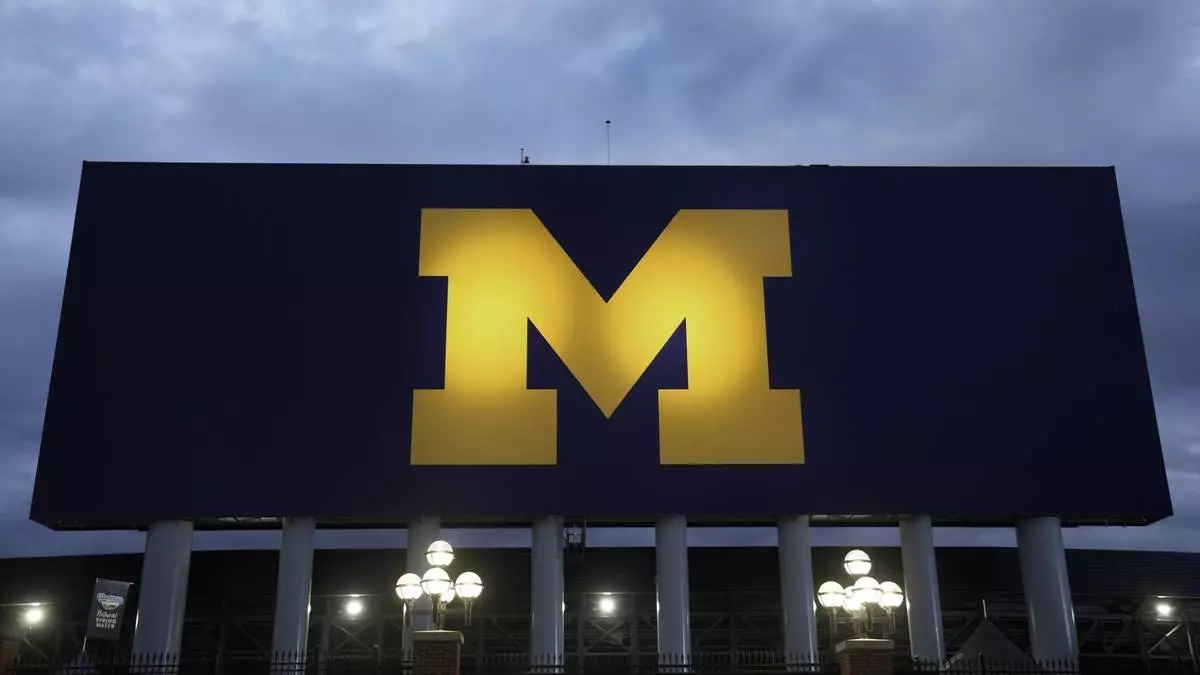
FILE - The block M logo for the University of Michigan is displayed at the school's NCAA college football stadium in Ann Arbor, Mich., on Nov. 10, 2023. (AP Photo/Paul Sancya, File)

A person walks past a cluster of retail store signs in La Habra, Calif., Wednesday, April 2, 2025. (AP Photo/Jae C. Hong)

Customers shop refrigerators at a retail store in Glenview, Ill., Thursday, April 3, 2025. (AP Photo/Nam Y. Huh)

Customers shop televisions at a retail store in Glenview, Ill., Thursday, April 3, 2025. (AP Photo/Nam Y. Huh)



